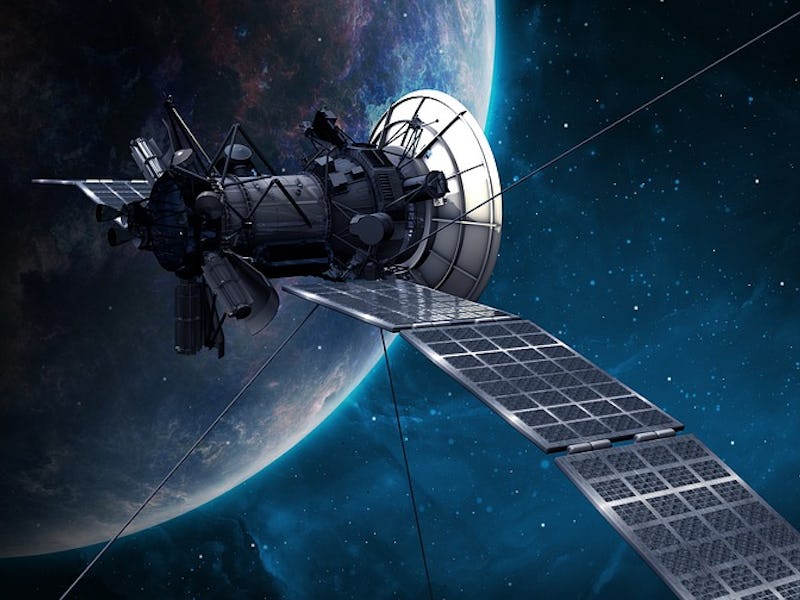NASA's Asteroid Drill Day 2: Two Ambitious Plans to Defend the Earth Emerge
"The next days will see more activity on this front."

This week, scientists at NASA’s Planetary Defense Conference in College Park, Maryland are in full swing of a bonafide doomsday drill. Fueled by Raisnettes and what appear to be Peanut M&Ms, representatives from international space agencies have gathered for NASA’s Planetary Defense Conference Exercise to decide what the world should do if an asteroid comes within striking distance of the Earth.
NASA has made it absolutely clear that the scenario presented in the drill is entirely fictional. In the exercise, scientists are deciding what to do about a fictional asteroid called 2019 PDC that, as of Monday (Day 1), was scheduled to hit Earth in April 2027. Tuesday marked Day 2 of the drill, and scientists used it to start rolling out their plans to protect the Earth.
As Tim Spahr, Ph.D., a conference attendee and former director of the Minor Planet Center in the Harvard-Smithsonian Center for Astrophysics tells Inverse, the drill is an opportunity for space agency representatives to do some creative thinking. Ideas proposed during the exercise might actually inform real-life asteroid defense technology, and some are in the works already.
“Much of what will be proposed in the exercise is technology which we think we can build,” Spahr says.
NASA Asteroid Drill: Day 2
On Day 2, the fictional date is July 29, 2019, and things are heating up. According to a press release, attendees at the conference were told that 2019 PDC now has a one in ten chance of colliding with Earth in April 2027.
Some of the most at-risk locations for 2019 PDC is NASA's asteroid drill.
The asteroid is now estimated to be around 460 to 850 feet, which, crucially, puts it within the White House’s roughly 460-foot benchmark for an asteroid that can cause severe damage. 2019 PDC is predicted to affect about 375,000 lives but could affect up to 19 million, according to briefing documents.
The asteroid is still eight years away in this scenario, but some of the world’s real asteroid emergency protocols have already fallen into place. In the scenario, the president of the United States has established a “Asteroid 2019 PDC Mitigation Task Force”, and NASA’s Planetary Science Director Lori Glaze, Ph.D., has been named the task force lead.
In accordance with United Nations policy, the International Asteroid Warning Network (IAWN) is now tasked with disseminating all known information about 2019 PDC. This is exactly what would happen in real life too, James Bauer, Ph.D., an astronomer and research professor at the University of Maryland, tells Inverse.
“From the IAWN perspective, IAWN would organize a campaign to observe 2019 PDC, and so scientists would be awaiting what the campaign would yield in terms of characterization of the asteroid.”
The characterization of that asteroid is crucial and will determine how space agencies move forward. Right now, the release stipulates that international space agencies should begin to propose a series of reconnaissance missions that can tell us more about 2019 PDC’s properties. That information will help the conference attendees make a crucial decision: How are we going to get rid of it?
Two Potential Protection Plans
It appears that the plan of attack is to try to bat the fake asteroid away from Earth using one of two strategies that currently exist. The scientists, however, will need more information before they can officially select one of them to deploy.
The Kinetic Impact Technique. One option is to fly a spacecraft up to the asteroid to collide with it and knock it off course. That course of action is referred to as called the “kinetic impact technique” and is actually the focus of the real-life NASA DART spacecraft, adds Spahr. (DART, for its part, plans to launch a real-life test scenario in late 2020 or early 2021.)
Standoff Nuclear Detonation. The other way that things could go down is to use a spacecraft laden with nuclear weapons to blow the asteroid off course. This technique is called “standoff” nuclear detonation.
A suite of different reconnaissance missions and potential deflection missions put together by conference attendees. They'll only pick a few of these missions to fly, and we'll find out which ones they pick over the next few days.
At the end of day 2, conference attendees are faced with a conundrum: Should they hit the asteroid with a spacecraft, or blow it off course with a bomb? The answer to that question will likely depend on the results from the reconnaissance missions that will survey the asteroid, and then yield more accurate information about its mass. According to briefing documents, mass is a is a “key parameter in any deflection attempt and may help in deciding which method to use.”
" The next days will see more activity on this front."
Crucially, they have to start entertaining both options now. It could take over a year to built the spacecraft, two years for it to reach 2019 PDC, and, according to documents, either technique will only work if they reach the asteroid within two to three years of its estimated Earth impact date. “The next days will see more activity on this front,” says Spahr.
Over the course of the week, we’ll see which option each space agency chooses to send 2019 PDC off its impact course with Earth.